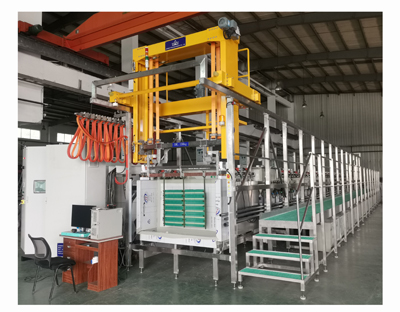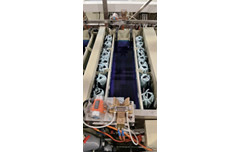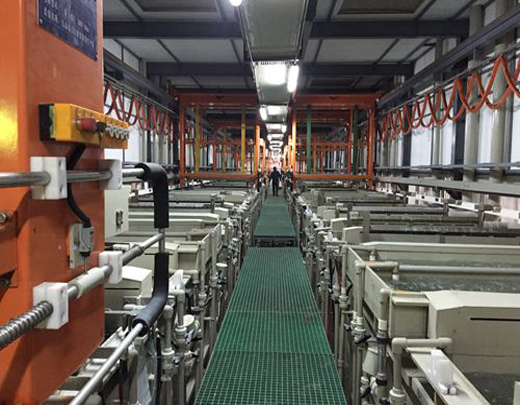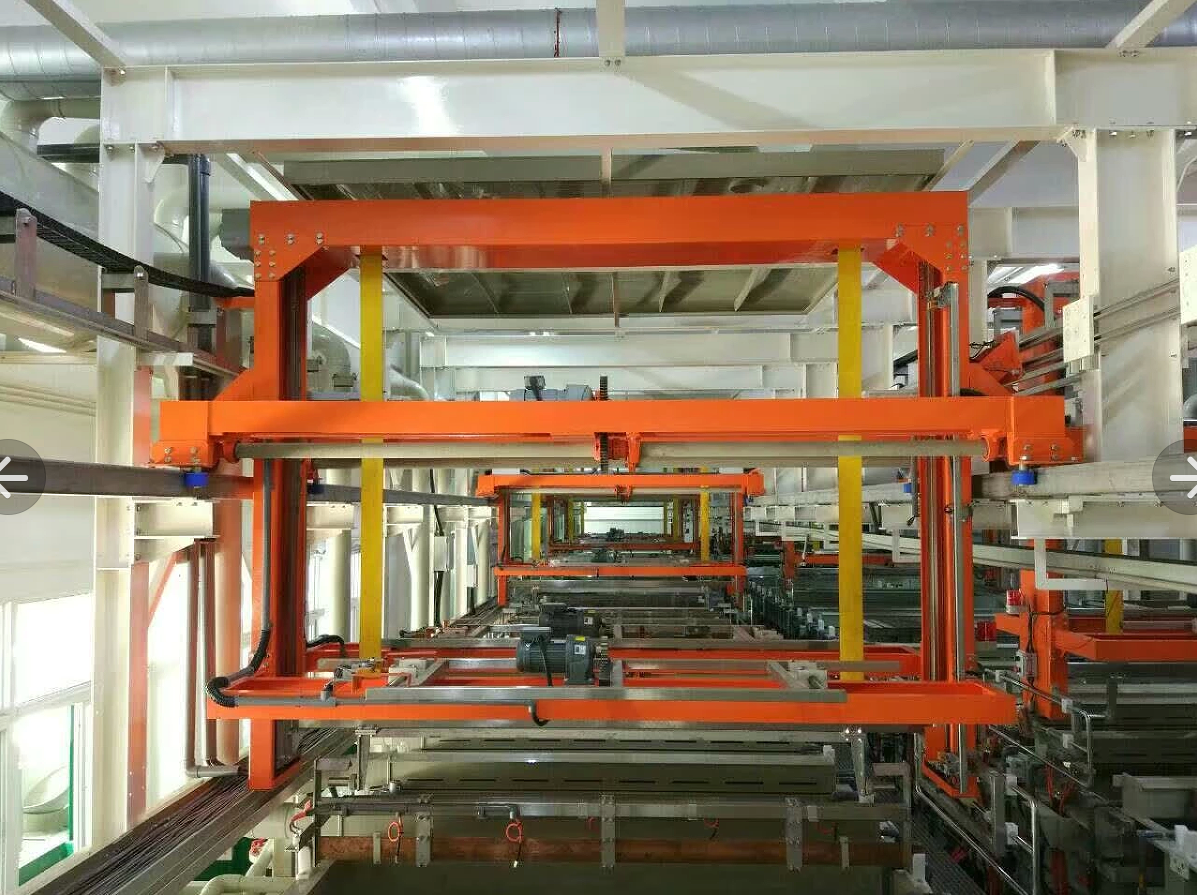1,Classification of electroplating process:
Acidic bright copper electroplating nickel / gold electroplating tin
2,PCB electroplating process flow:
Pickling → copper plating on the whole board → pattern transfer → acid degreasing → 2 levels countercurrent rinsing → micro etching → 2 levels water rinsing → pickling → tin plating → 2 levels countercurrent rinsing
Countercurrent rinsing → pickling → graphic copper plating → 2 levels countercurrent rinsing → nickel plating → 2 levels water rinsing → citric acid pickling → gold plating → recycling → 2-3 levels of pure water washing → drying
3, Process Description:
(1) pickling
① Function and purpose: remove the oxide on the plate surface and activate the plate surface. The general concentration is 5%, and some are kept at about 10%, mainly to prevent the water from entering and causing the unstable sulfuric acid content in the tank liquid;
② The acid leaching time should not be too long to prevent the oxidation of the board surface; After using for a period of time, if the acid solution is muddy or the copper content is too high, it should be replaced in time to prevent contamination of the electroplated copper cylinder and the surface of the plate;
③ C.P grade sulfuric acid should be used here;
(2) Full board copper plating: also known as primary copper, panel plating
① Function and purpose: protect the thin chemical copper just deposited, prevent the chemical copper from being corroded by acid after oxidation, and add it to a certain extent by electroplating
② Process parameters related to copper plating on the whole plate: the bath solution is mainly composed of copper sulfate and sulfuric acid. The formula of high acid and low copper is adopted to ensure the uniformity of plate thickness distribution and the deep plating ability of deep holes during electroplating; The content of sulfuric acid is mostly 180 g / L, and most of them reach 240 g / L; The content of copper sulfate is generally about 75 g / L. in addition, a trace of chloride ion is added to the bath liquid to play the gloss effect together as an auxiliary gloss agent and copper gloss agent; The addition amount or cylinder opening amount of copper polish is generally 3-5ml/l, and the addition of copper polish is generally supplemented according to the method of kiloampere hours or according to the actual production effect; The current of the whole board electroplating is generally calculated by multiplying 2 A / square decimeter by the electroplating area on the board. For the whole board electricity, that is, the board length DM × Plate width DM × two × 2A/DM2; The temperature of the copper cylinder is maintained at room temperature. Generally, the temperature is not more than 32 degrees, and is mostly controlled at 22 degrees. Therefore, due to the high temperature in summer, it is recommended to install a cooling temperature control system for the copper cylinder;
③ Process maintenance: add copper polish in time according to kiloampere hours every day, and add it according to 100-150ml/kah; Check whether the filter pump works normally and whether there is air leakage; Clean the cathode conductive rod with a clean wet cloth every 2-3 hours; Analyze the content of copper sulfate (once a week), sulfuric acid (once a week), and chloride ion (twice a week) in the copper tank regularly every week, adjust the content of brightener through Hall cell test, and supplement relevant raw materials in time; Clean the anode conducting rod and the electrical connectors at both ends of the tank every week, and timely replenish the anode copper ball in the titanium basket with a low current of 0. 2—0。 5asd electrolysis for 6-8 hours; Check the titanium basket bag of anode every month for damage, and replace it in time if it is damaged; Check whether there is anode mud accumulated at the bottom of the anode titanium basket, and if so, clean it up in time; The carbon core is used for continuous filtration for 6-8 hours, and the impurities are removed by low current electrolysis at the same time; Every half a year or so, determine whether large-scale treatment (activated carbon powder) is required according to the tank liquid pollution situation; Replace the filter element of the filter pump every two weeks;
④ Large processing procedure: A. take out the anode, pour out the anode, clean the anode film on the anode surface, and then put it in the barrel packaging the copper anode. Roughen the copper corner surface with a micro etchant to a uniform pink. After washing and drying, put it into the titanium basket, and then put it into the acid tank for standby. B. soak the anode titanium basket and anode bag in 10% alkaline solution for 6-8 hours, wash and dry it with water, and then soak it in 5% dilute sulfuric acid, and then use it for standby after washing and drying;
C. Transfer the tank liquid to the standby tank, add 1-3ml/l of 30% hydrogen peroxide, start heating, wait until the temperature reaches about 65 ℃, turn on air stirring, and stir with insulated air for 2-4 hours; D. Turn off the air stirring, slowly dissolve the activated carbon powder into the bath solution at the rate of 3-5 g / L, and turn on the air stirring after the dissolution is complete, so as to keep the temperature for 2-4 hours; E. Turn off the air agitation, heat it up, and let the activated carbon powder slowly settle to the bottom of the tank; F. When the temperature drops to about 40 ℃, use 10um PP filter element plus filter aid powder to filter the tank liquid into the cleaned working tank, turn on air mixing, put in the anode, hang it into the electrolytic plate, and press 0. 2-0。 5asd current density low current electrolysis for 6-8 hours, G. after chemical analysis, adjust the content of sulfuric acid, copper sulfate and chloride ion in the tank to the normal operating range; Replenish the brightener according to the Hall cell test results; H. After the color of the electrolytic plate is uniform, stop electrolysis, and then press 1-1. 5The current density of ASD shall be treated by electrolytic film generation for 1-2 hours, and then a uniform and dense black phosphorus film with good adhesion shall be formed on the anode; 1. Test plating ok OK;
⑤ The anode copper ball contains 0. 3—0。 6% phosphorus, the main purpose is to reduce the anode dissolution efficiency and reduce the production of copper powder;
⑥ When supplementing drugs, such as adding a large amount of copper sulfate and sulfuric acid; After addition, it should be electrolyzed with low current; Pay attention to safety when adding sulfuric acid. If the amount of sulfuric acid is large (more than 10 liters), add it slowly several times; Otherwise, the temperature of the bath liquid will be too high, the photocatalyst will decompose faster, and the bath liquid will be polluted;
⑦ Special attention should be paid to the replenishment of chloride ions, because the chloride ion content is particularly low (30-90ppm), when replenishing, it must be weighed accurately with a measuring cylinder or a measuring cup before adding; 1ml hydrochloric acid contains about 385ppm chloride ions.








 Nov. 01, 2021
Nov. 01, 2021 




